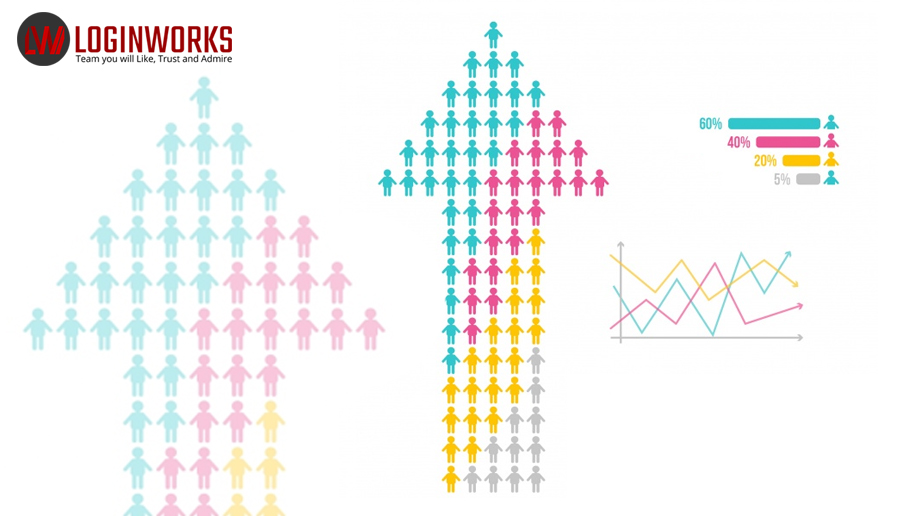Irrespective of how advanced your machine learning model is, the outputs from the algorithm will be bad if the input-population is bad.
Despite various precautions, data models might be populated with wrong data due to technological problems, human error, intentional wrong inputs by customers, and many other reasons.
There are innumerable cases where the outputs have been bad, not because the testing model itself had errors, but because the data was not accurate or relevant.
Digital data streaming will bring in all kinds of data. The impact of the wrong population in your testing model will be detrimental. It will cause a large number of business losses that could go up to millions of dollars.
Data scientists understand the importance of good data, but businesses also need to understand the meaning of the wrong population and why it is important to correct the situation.
Jump to Section
WHAT IS WRONG POPULATION IN A DATA MODEL
Millions of scraps of data are analyzed by Data Analytics algorithms in order to predict consumer behavior.
Businesses plan their marketing strategies for maximum effect based on their predictions.
What Constitutes Wrong Population?
Out of this vast ocean of data, what constitutes the wrong population? Some examples are:
Ambiguous information: Data that is not very clear and is giving conflicting information is an example of the wrong population.
Corrupt data: Data that has been infected by malware and is mined along with the relevant data despite firewalls and protective measures.
Junk: Business intelligence is a wonderful concept and has a vast number of applications. But sometimes it has the capacity of picking up information that seems logical to the machine but is actually useless in real life.
Biased data: This occurs at the time of data input when the person entering the information is biased, like for example a customer deliberately entering wrong data. The biased data is then mined along with the rest of the information.
Incomplete patterns: Data may be incomplete because there are some missing links. So even if the model is perfect the missing patterns will produce wrong results.
EFFECTS OF USING THE WRONG POPULATION
The Gartner study published in October 2011 states that nearly 40% of business data is either incomplete, inaccurate, ambiguous, or not available. Using such bad data will directly impact a business. It will result in wrong business decisions and consequent heavy losses.
Some of the effects on a business are:
- Not tracking the habits of potential consumers
- Underestimating the buying capacity of consumers
- Inadequate customer relationship activities
- Making wrong predictions
- Not assessing the risk properly
- Losing customers and revenue.
HOW TO CORRECT THE SITUATION IF THE MODEL IS BASED ON THE WRONG POPULATION
There are 7 very effective measures you can implement to correct the situation if your data model is built on the wrong population. They include:
1. Cleansing
The data must be cleansed with regularization methods. The use of subsets of data and regressive testing will help to track unexpected behaviors in the pattern. This process will detect, segregate, and eliminate the wrong population as well as overfitting of data. It will remove outdated and irrelevant information from the data vault as well.
2. Eliminating Duplications
Disk fragmentation many times causes duplication of data because it is stored in bits and pieces. This will blur the system with too much and/or conflicting data. Naturally, a data model that is populated with such information is bound to produce incorrect results! So it will be prudent to modify your data model so that it eliminates duplicate data during the digital data streaming stage and arrests the wrong population.
3. Automating Data Input
Automating the process of data input will ensure that at least in the future the data entered does not carry the burden of human error. One of the ways this can be implemented is by giving multiple-choice questions to customers during a feedback session instead of text boxes to input data.
4. Standardizing
Standardization of data is very necessary to ensure that the information is useful for analytics. By using histograms, you must check the quality of data so that the model can be modified to eliminate the wrong population. Although this concept is not new it will reduce the level of wrong population and also the chances of recurring errors.
5. Creating a Hybrid Model
Modify your model into a hybrid version so that it has a more aggressive approach towards the wrong population. This will not only prevent such a situation in the future, it will also make the data model more accurate and easier to govern.
6. Conducting Data Audits
However efficient your data model may seem, it is difficult to detect the wrong population unless you carry out audits. Governing the data model is a crucial part of correcting a build of the data model on the wrong population.
Cross-checking the customer touchpoints like sales terminals, websites, ads, social media networks, etc. Will warn you if there is a wrong population or some other problem that is generating erroneous reports.
7. Setting Optimum Test Parameters
Having just the right parameters to test the data is definitely going to make your model more efficient at detecting any anomalies like wrong population. When the testing parameters leave no room for glitches or errors, then the wrong population will be identified very easily. It will also ensure that the data is consistent and relevant.
Final Words
The quality of a data model depends not just on the efficiency of its algorithm, but also on the quality of the input data. To prevent huge losses businesses must approach brokers who have designed the best tools for Data Analytics. In most cases, the DA tools are self-correcting models that eliminate redundancies and irrelevancies so that there is no room for errors.
But a data model can get infested with the wrong population due to extraneous reasons which are beyond its scope. So here is the 7-step process by which an analyst can correct if build a data model on the wrong population.
- Business Intelligence Vs Data Analytics: What’s the Difference? - December 10, 2020
- Effective Ways Data Analytics Helps Improve Business Growth - July 28, 2020
- How the Automotive Industry is Benefitting From Web Scraping - July 23, 2020



